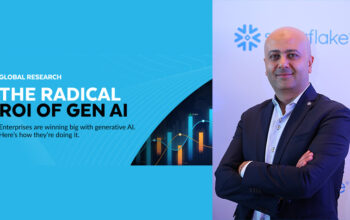

Dubai, UAE, October 6, 2024 – As artificial intelligence (AI) reshapes the business landscape, enterprises are shifting from traditional monolithic systems to flexible, modular architectures known as composable AI. This transition promises customization, adaptability, and future-proofing for organizations across various industries.
“Composable AI is the next big miracle in business tech that most CEOs should consider before getting locked into a particular AI vendor,” says Talal Thabet, CEO of Haltia.AI. “Think of it like building with LEGO blocks—you can quickly switch things up, plug in the latest AI tools, and customize to your needs.”
The Rise of Composable AI
Traditional AI systems struggle to keep pace with rapidly evolving enterprise needs. A recent Gartner study predicts that by 2025, 60% of organizations will adopt composable architecture, up from less than 10% in 2022. This shift is driven by the demand for flexibility, scalability, and interoperability in AI systems. Composable AI allows businesses to assemble AI components like building blocks, tailoring solutions to specific needs and easily integrating new capabilities.
Benefits and Cost Savings
Composable AI offers significant cost-saving benefits for enterprises by reshaping how AI solutions are developed and deployed. Traditionally, building AI systems from scratch is resource-intensive. Composable AI allows companies to reuse pre-built components, meaning they don’t have to reinvent the wheel for every application.
“This modular approach cuts down on development costs and reduces the need for specialized labor,” explains James Nicol, CRO at Haltia.AI. “Additionally, by accelerating time-to-market, Composable AI helps enterprises capture revenue sooner, creating a faster return on investment.”
According to McKinsey, companies with strong digital and AI capabilities consistently outperform their peers, often employing modular tech stacks that align with their business strategies.
Composable AI in Action
The potential of composable AI is already being realized in various sectors. In financial services, institutions enhance fraud detection by deploying new models quickly. In healthcare, providers use diverse data sources to create comprehensive patient profiles, improving care efficiency. Meanwhile, government agencies assemble AI modules to enhance citizen services, streamlining processes and improving responsiveness.
Challenges Ahead
Despite its benefits, transitioning to composable AI presents challenges. Organizations must ensure seamless data integration and address skill gaps in modular architecture design. Clear protocols for component management are essential for successful implementation.
As AI continues to evolve, the focus on composable architectures is expected to intensify, offering businesses a dynamic, tailored solution to meet their specific needs. The future of AI lies in flexibility and adaptability, making composable AI a vital strategy for success.








